The Curious Beginner's Guide to Crypto Wallets
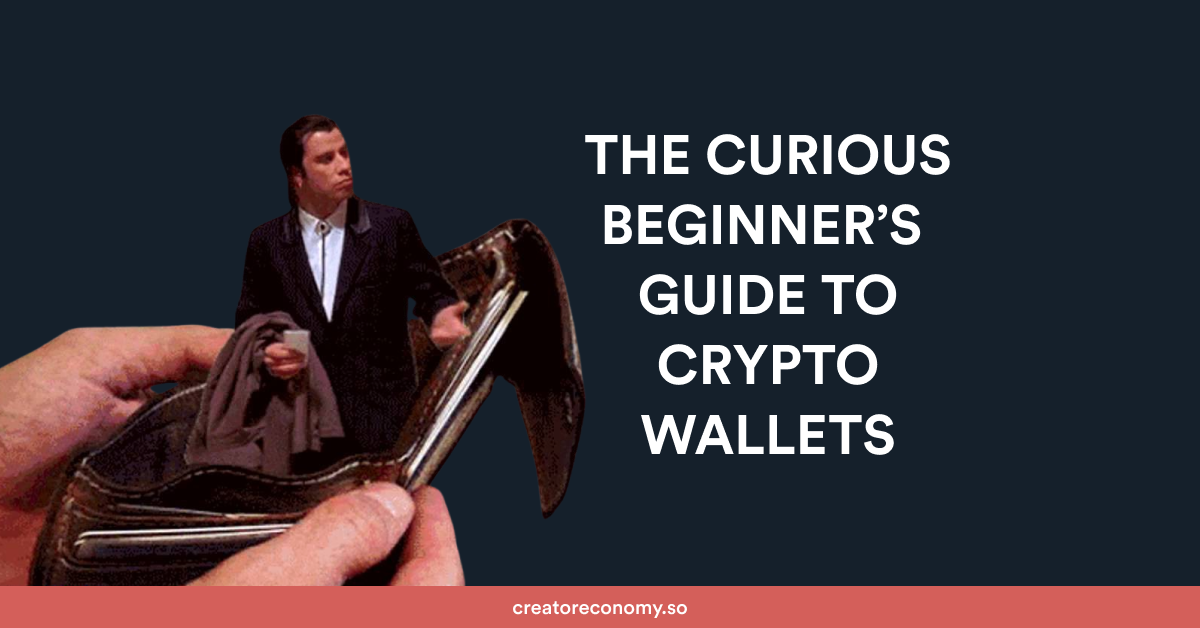
Our team linked up with Peter Yang and Jieyu to share a great write-up on crypto wallets. The article below is their original words from the Creator Economy newsletter reshared for your convenience.
With all the buzz about web 3, we wanted to bring a great resource right to your inbox. Today's topic: why you should care about crypto wallets and how to set one up.
Dear Builders,
You need a crypto wallet to start your web 3 journey. As a follow up to our curious beginner’s guide to crypto, let's explain like I'm five:
- What is a crypto wallet?
- Which wallet should I get?
- How do I set up a wallet?
- How do I send stuff to my wallet?
- How do I keep my wallet safe?
- Bonus: How do I add an eth domain?
By the end of this guide, you’ll have a wallet set up and secured. Let’s dive in.
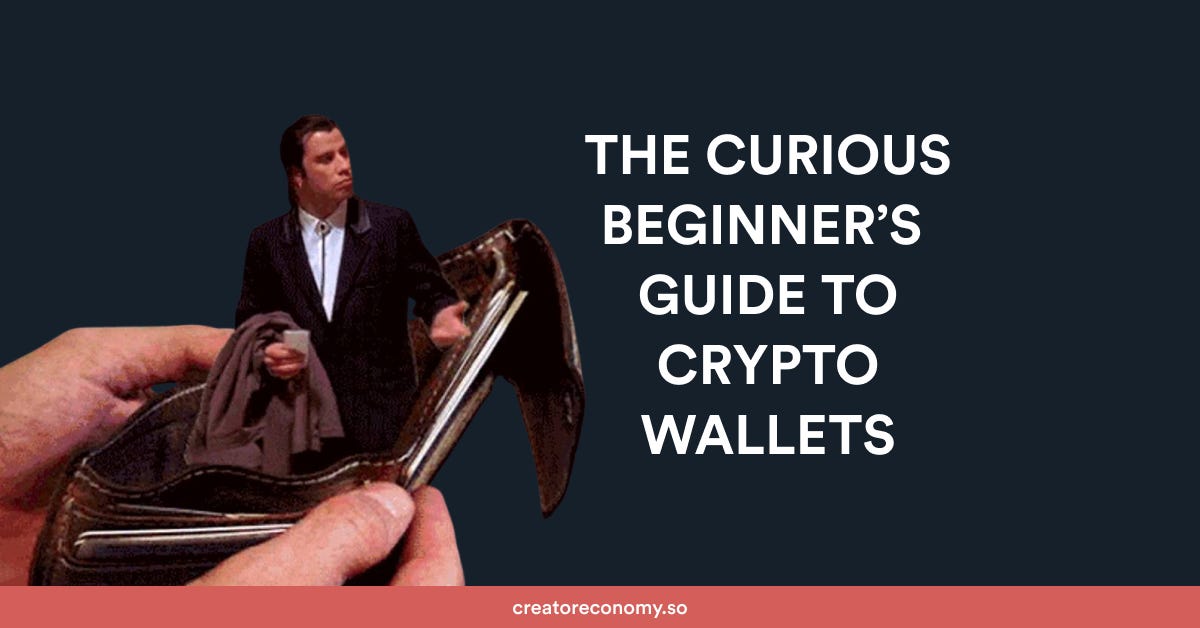
What is a crypto wallet?
A crypto wallet stores two keys:
- A public key links to an address that lets you send and receive transactions.
- A private key proves that you own the assets associated with your address.
A seed phrase is 12-24 words that lets you access your private key.

If your wallet was your bank account, your public key would be your account number and your private key would be your pin number. Of course, in web 3, your assets are on the blockchain vs. in a bank. Just remember that:
- You can share your public key with others to send and receive transactions.
- You must never share your private key or seed phrase with anyone.
Which wallet should I get?

Crypto wallets include hot (software) and cold wallets (hardware). Our advice is to:
Start with a hot wallet then move your long-term assets to a cold wallet.
1. Start with a hot wallet
Hot wallets are connected to the internet. They’re more convenient but less secure than cold wallets. There are two types:
- Hosted wallets are managed by an exchange (e.g., Coinbase) that you log in to with a username and password. With a hosted wallet, you don’t own your keys. In fact, most people use exchanges without realizing that they have a wallet.
- Non-custodial wallets are self-managed. Because you own your keys, you can use these wallets as your web 3 identity. Popular non-custodial wallets include MetaMask, Rainbow, and Coinbase Wallet.
2. Move long-term assets to a cold wallet
Cold wallets are hardware devices that are default offline and therefore more secure.
If you have assets that you don’t want to trade anytime soon, move them to a cold wallet like Trezor and Ledger. The cost of buying a cold wallet ($60-150 USD) is worth it to secure your long-term assets.
How do I set up a wallet?
Here’s how you can set up a hot wallet using MetaMask (web) and Rainbow(mobile):
1. Create a wallet using Metamask
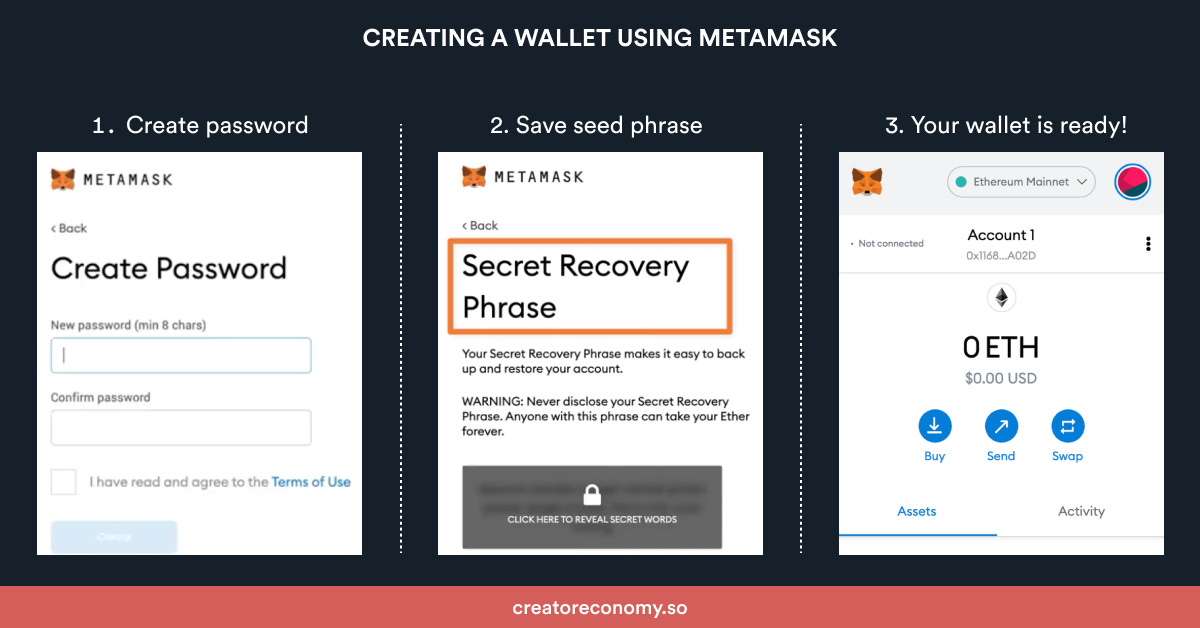
- Install MetaMask for your web browser.
- Click on the MetaMask icon and click Get Started.
- Select “Create a Wallet.”
- Create a password for MetaMask.
- Write down your seed phrase and store it somewhere secure.
Voila, you’re done! Now let’s access the same wallet up from the Rainbowmobile app.
2. Access your wallet from the Rainbow mobile app
- Download the Rainbow mobile app
- Click “I already have one” and then “Restore with a secret phrase”
- Type in your seed phrase and tap Import
Congrats! You now have access to the same wallet on two separate platforms. Note how this is different from web 2 where each platform would require a separate username and password. In web 3, you own your keys and identity.
Learn more:
How do I send stuff to my wallet?
Let's transfer some assets to your new wallet.
The example below assumes that you have some ethereum in your exchange account (e.g., Coinbase, Gemini).
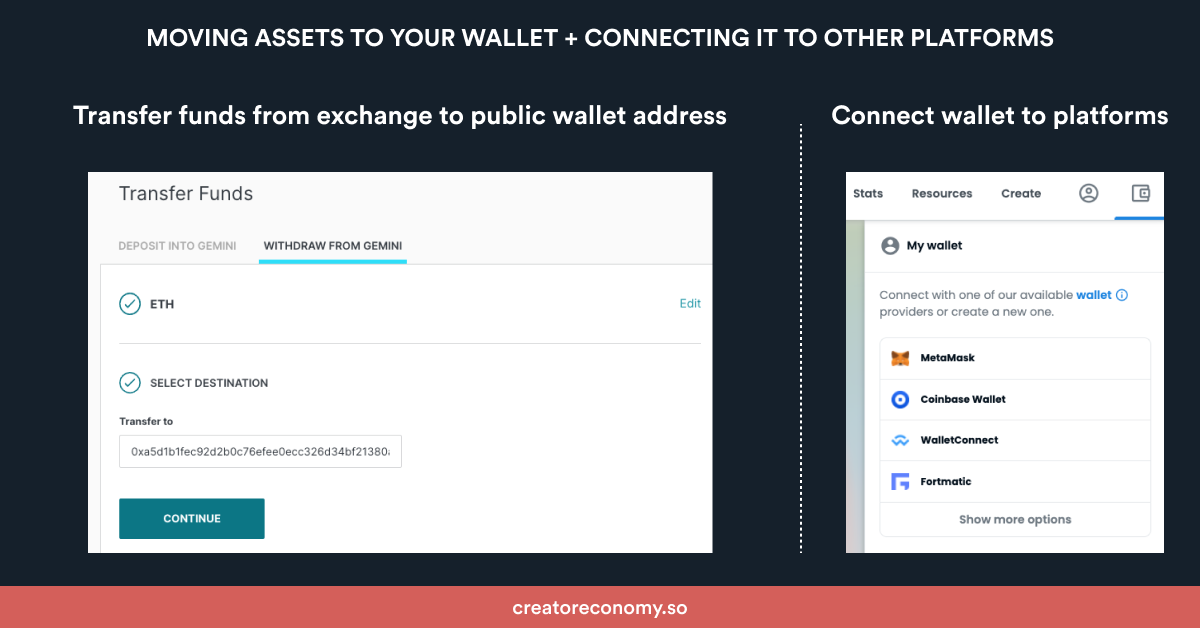
1. Transfer ethereum to your wallet
- Log in to your exchange
- Navigate to the withdraw from exchange page
- Select “eth” and the amount that you want to withdraw
- Copy and paste your public wallet address
- Confirm the transaction
It could take minutes for your eth to show up in your wallet. Once it’s there, follow the steps below to connect your wallet to OpenSea, a leading NFT marketplace.
2. Connect your wallet to OpenSea
- Visit OpenSea on the web and click the profile button
- Select your wallet and sign the connection when prompted
- Once you connect your wallet, you’ll be able to buy NFTs using your eth
We’ll cover how to find great NFT projects in a future guide.
How do I keep my wallet safe?
If your private key or seed phrase is lost or stolen, you will permanently lose access to your assets. Make no mistake:
Helping you secure your wallet is the most important part of this post.
Here’s how you can secure your wallet:
- Store your private key and seed phrase in a secure location. Mine is written on physical paper that I keep with other important documents offline. If you must store these artifacts online, use a password manager like 1Password.
- Never share your private key or seed phrase with anyone. It doesn’t matter who asks - just don’t share it.
- Secure your wallet password. If your wallet has a separate password, anyone who has it can get your private key. Choose a secure password and turn on 2FA.
- Move long-term assets out of your daily hot wallet. Put them into a cold wallet or another hot wallet. If you have a lot of assets in your wallet and share its address publicly, you’re asking to get scammed.
- Check the website URL, email, or social handle before taking any action. Scammers will pretend to be a trusted platform to phish for your seed phrase.
- Turn off Discord DMs and don’t interact with unknown assets in your wallet. These are two common attack vectors that scammers use. More below.
Scammers will go to great lengths to trick you into sharing your private key or seed phrase. Here’s a list of scams and tips to avoid them:
Fake customer support: e.g., “Your Metamask account has been hacked.”
- Always verify the website URL, email address, or social handle first.
- Remember: No reputable platform will ask for your private key or seed phrase.
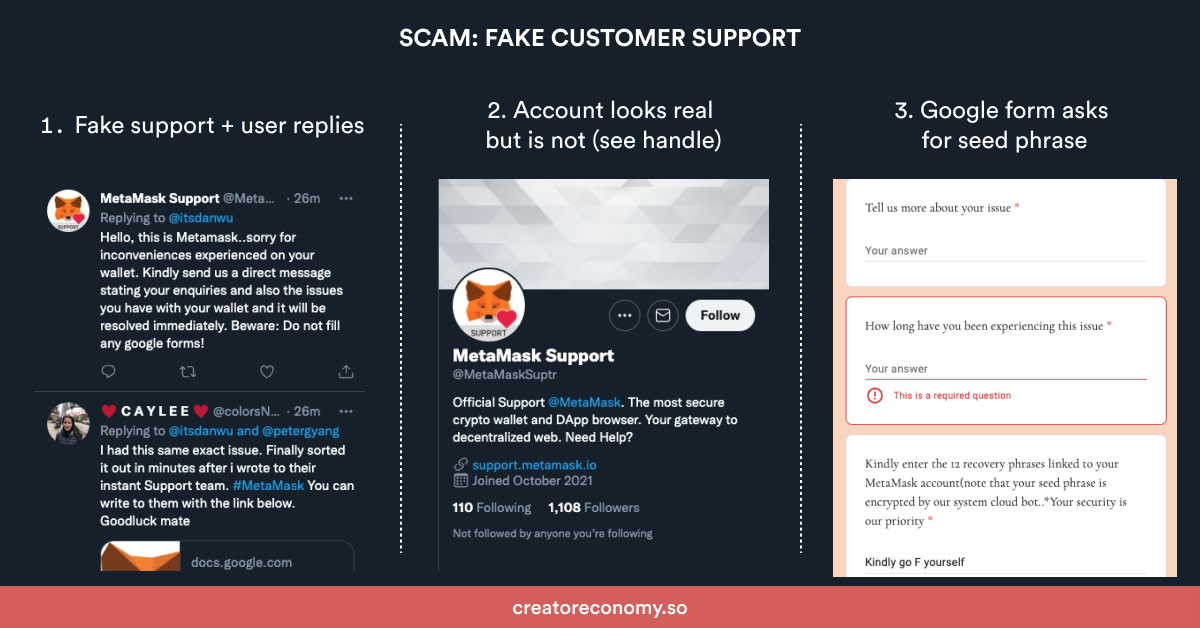
Fake NFT or token drops: e.g., “We’re giving you a free NFT for your loyalty to the community.” or “You have $182K in akSwap.io in your wallet.”
- Turn off Discord DMs when you join new crypto servers.
- Don’t interact with an unknown cryptocurrency or NFT in your wallet.
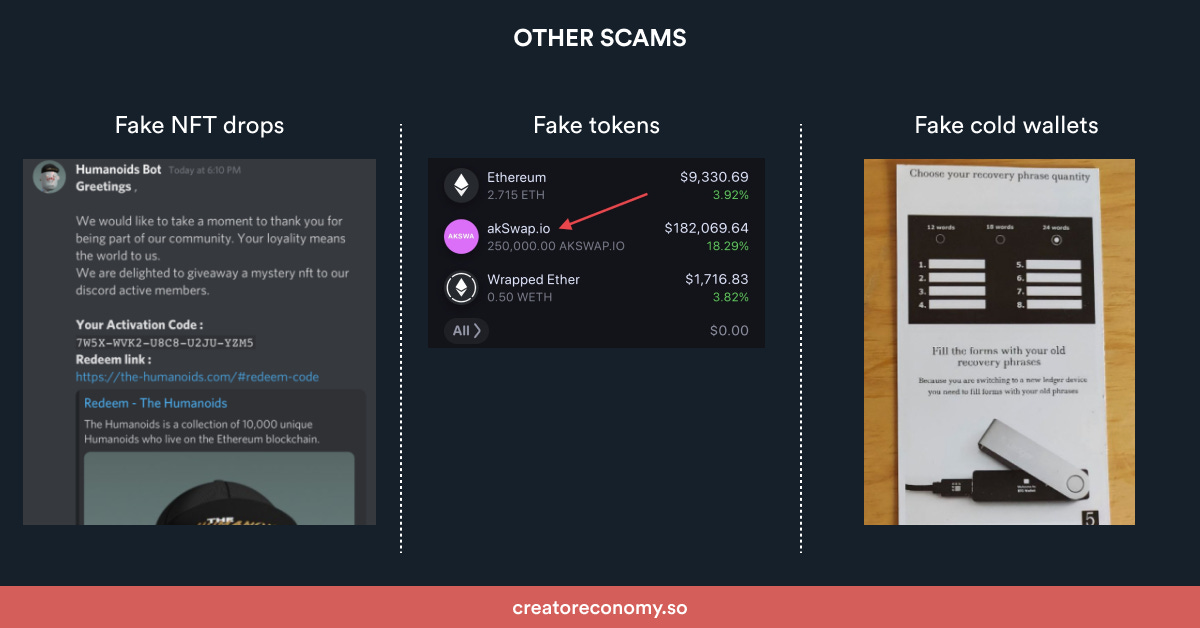
Fake cold wallets: e.g., “Replace your Ledger to secure your funds.”
- Yes, this actually happens. Throw that stuff in the trash.
Learn more about keeping your crypto wallet safe:
Bonus: How do I add an .eth domain to my wallet?
Recall that your public key lets people send crypto assets (e.g., NFTs) to you. Unfortunately, it’s a long string of random characters (e.g., 0xa5d1b…) that’s hard to remember.
Won’t it be cool if people could send assets to yourname.eth instead? Let’s do it:
- Go to ens.domains and connect your wallet
- Search for yourname.eth or whatever you want to call your public wallet address
- If the address is available, choose the registration period and click “Request.” The transaction will cost a small amount of eth.
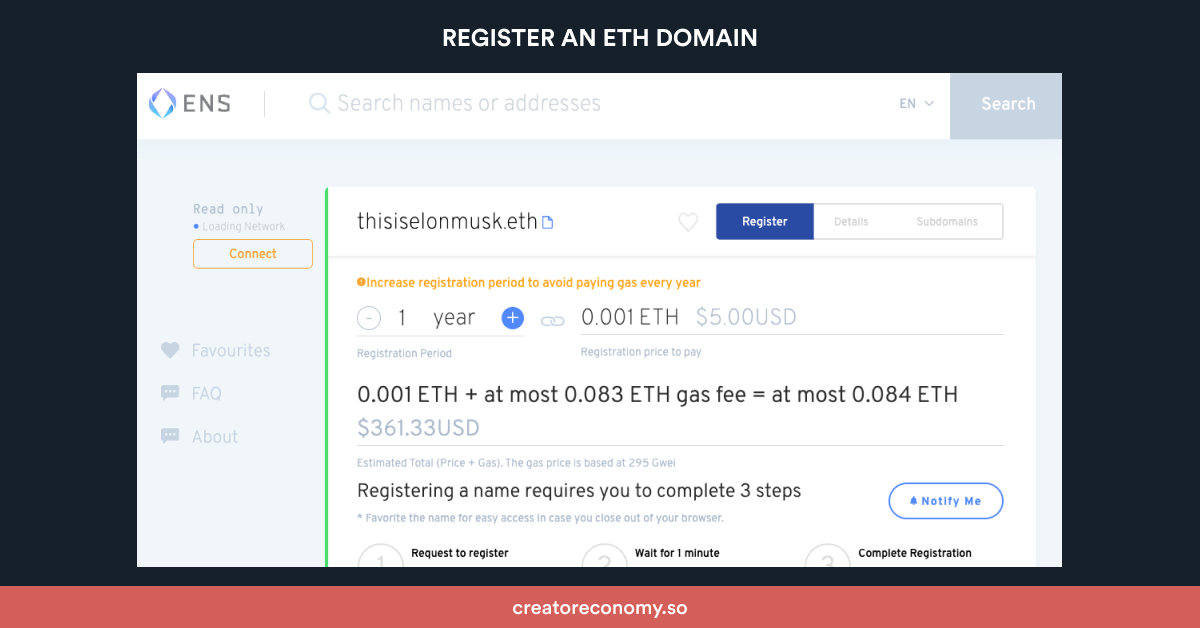
Once the transaction is confirmed, you should have an eth domain that people can send crypto assets to. You can confirm that you now own the domain by:
- Looking for it in wallets like Rainbow
- Typing it in on Etherscan to see if it matches your public wallet address
Why do crypto wallets matter?
A long time ago, I worked on Facebook Login. Our goal was to bring your Facebook identity to every website and mobile app. But:
The future that I want to live in is one where I own my identity vs. some platform.
If web 3 is about ownership, then your crypto wallet is your owned identity. Today, it lets you access your cryptocurrencies and NFTs. Tomorrow, who knows what parts of your identity will be stored on the blockchain and accessible from your wallet?
Want to learn more?
We’re creating more high-quality web 3 learning paths as a community, including those about:
- Buying cryptocurrencies
- Finding great NFT projects
- Contributing to DAOs
If you’re interested in contributing to these guides, you’re welcome to join our community. It’s 100% free and we have amazing plans ahead.
Thanks again to Peter and Jieyu for collaborating on this article. If you like the guide, you can follow more of their work at the Creator Economy by Peter Yang.
Did you like this collaboration with another writer? Tweet us with your thoughts.
How did you like this week's newsletter?
😍 Loved it · 😕 Meh · 😠 Hated it

